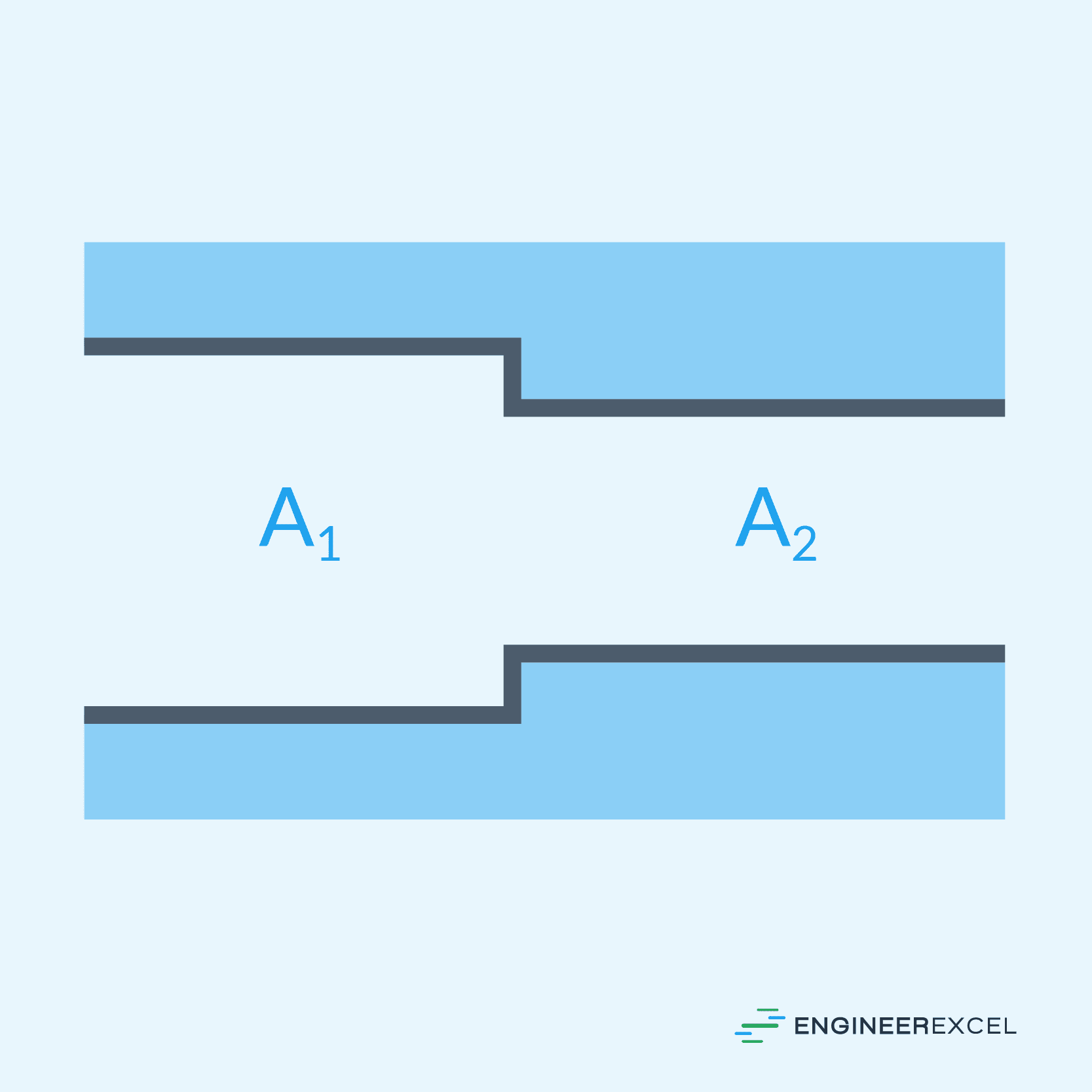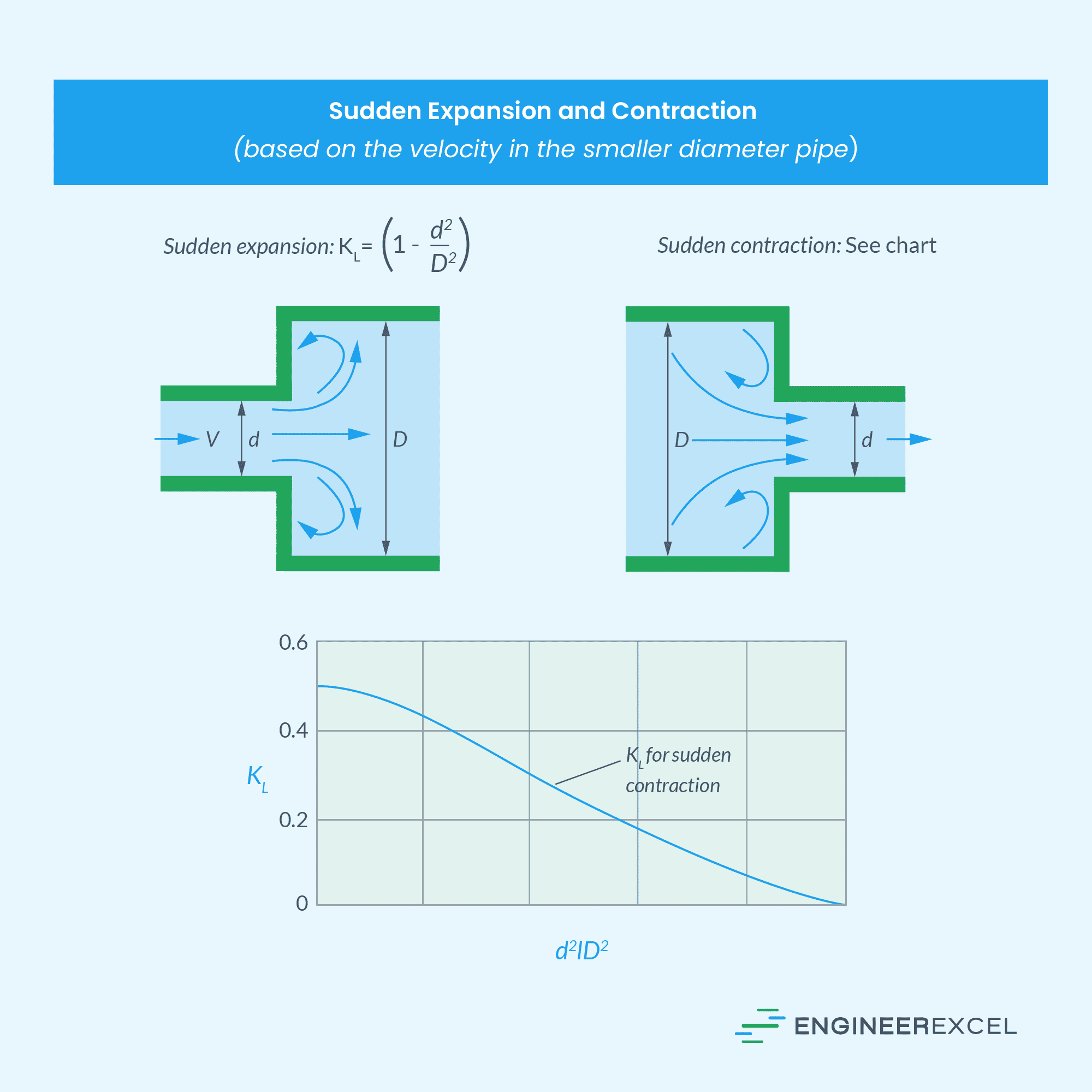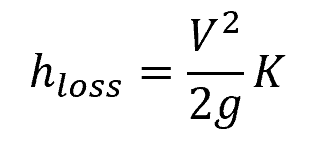Sudden contractions in a pipeline occur when there is a sudden decrease in the cross-sectional area of a portion of the pipe. Just like any pipe component, these contractions cause pressure losses in the fluid, which can be quantified using loss coefficients.

This article discusses loss coefficients of sudden contractions in pipelines.
Loss Coefficient of Sudden Contraction
A sudden contraction in a pipeline refers to a section where the diameter of the pipe abruptly decreases, resulting in a smaller cross-sectional area for the fluid to flow through. This reduction in pipe diameter creates a constriction or narrowing in the pipeline, as shown in the diagram below.


Elevate Your Engineering With Excel
Advance in Excel with engineering-focused training that equips you with the skills to streamline projects and accelerate your career.
One common reason for incorporating a sudden contraction in a pipe is to control or regulate the flow of fluid within the pipeline. By reducing the pipe diameter, the flow rate of the fluid can be controlled or restricted.
It can also be used to reduce the pressure of the fluid in specific parts of the pipeline system. When the diameter of the pipe decreases abruptly, the velocity of the fluid increases, and according to Bernoulli’s principle, an increase in fluid velocity is associated with a decrease in pressure.
Lastly, it can be used to promote mixing or homogenization of different fluids or components within the pipeline. When fluids with different properties or concentrations are introduced into the narrowed section, they can mix more effectively due to increased turbulence.
Despite these applications, these sudden contractions cause pressure losses in the system. When fluid passes through such transitions, energy losses emerge due to flow separation and turbulence. These energy losses can affect the overall performance of the pipe system; hence, it is crucial to manage and estimate these losses during the design process.
In fluid mechanics, these losses can be quantified using a dimensionless parameter called the loss coefficient. In essence, the loss coefficient of a sudden contraction measures the ratio of the head loss across the contraction to the dynamic pressure of the fluid, as shown in the following equation:

Where:
- K = loss coefficient of the sudden contraction [unitless]
- ΔP = pressure drop due to the contraction [Pa]
- ρ = fluid density [kg/m3]
- V = fluid velocity [m/s]
This loss coefficient helps predict the pressure drop across the contraction, which needs to be considered when calculating for the total head loss of the system.
Determining Loss Coefficient of Sudden Contraction
Sudden contractions pose a greater challenge in predicting the loss coefficient as compared to sudden expansions. This is because the flow separation caused by sudden contractions is more complex and erratic. Hence, loss coefficients of sudden contractions are purely obtained from experiments.
Nonetheless, it is generally observed that the loss coefficient of sudden contractions has a nearly linear relationship with the square of the ratio of the smaller and larger diameter. This is shown in the graph below.

For d/D values up to 0.76, the graph above can be approximated using the following empirical formula:

Where:
- d = smaller diameter [m or in]
- D = larger diameter [m or in]
Calculating Head Loss Due to Sudden Contraction
Once the loss coefficient has been determined, the head loss due to sudden contraction can be calculated using the following formula:

Where:
- hloss = head loss due to sudden contraction [m]
- g = gravitational constant [9.81 m/s2]
Note that the velocity in the above formula pertains to the fluid velocity after contraction.
In addition to the losses caused by sudden contractions, other components such as valves, fittings, inlets, exits, and the pipe itself can also contribute to the total head losses in a system. All of these losses need to be accounted for in order to ensure efficient design and proper operation of your piping network.
Factors Affecting Loss Coefficient of Sudden Contractions
The loss coefficient for sudden contractions is influenced by several factors. These factors include the diameter ratio, Reynolds number, and flow properties like fluid viscosity and density.
Diameter Ratio (d/D)
The diameter ratio is the ratio of the downstream (smaller) pipe diameter to the upstream (bigger) pipe diameter in a sudden contraction. In general, a higher ratio results in a lower loss coefficient, while a lower ratio leads to a higher loss coefficient. As the area ratio approaches one, the losses become negligible.
Reynolds Number (Re)
The Reynolds number of the flow dictates the flow regime, which impacts the loss coefficient. Higher Reynolds numbers, typically above 103 for sudden contractions, are associated with turbulent flow and higher loss coefficients. Conversely, laminar flow occurs at lower Reynolds numbers and exhibits lower loss coefficients.
Fluid Properties
The empirical formula used to estimate the loss coefficient of a sudden contraction, shown above, does not involve any fluid parameter. However, fluid properties such as viscosity and density still affect the loss coefficient.
When the viscosity of a fluid is higher, the energy losses due to friction also increase, leading to a higher loss coefficient. Meanwhile, fluid density indirectly affects the loss coefficient as it is related to Reynolds number calculations.
